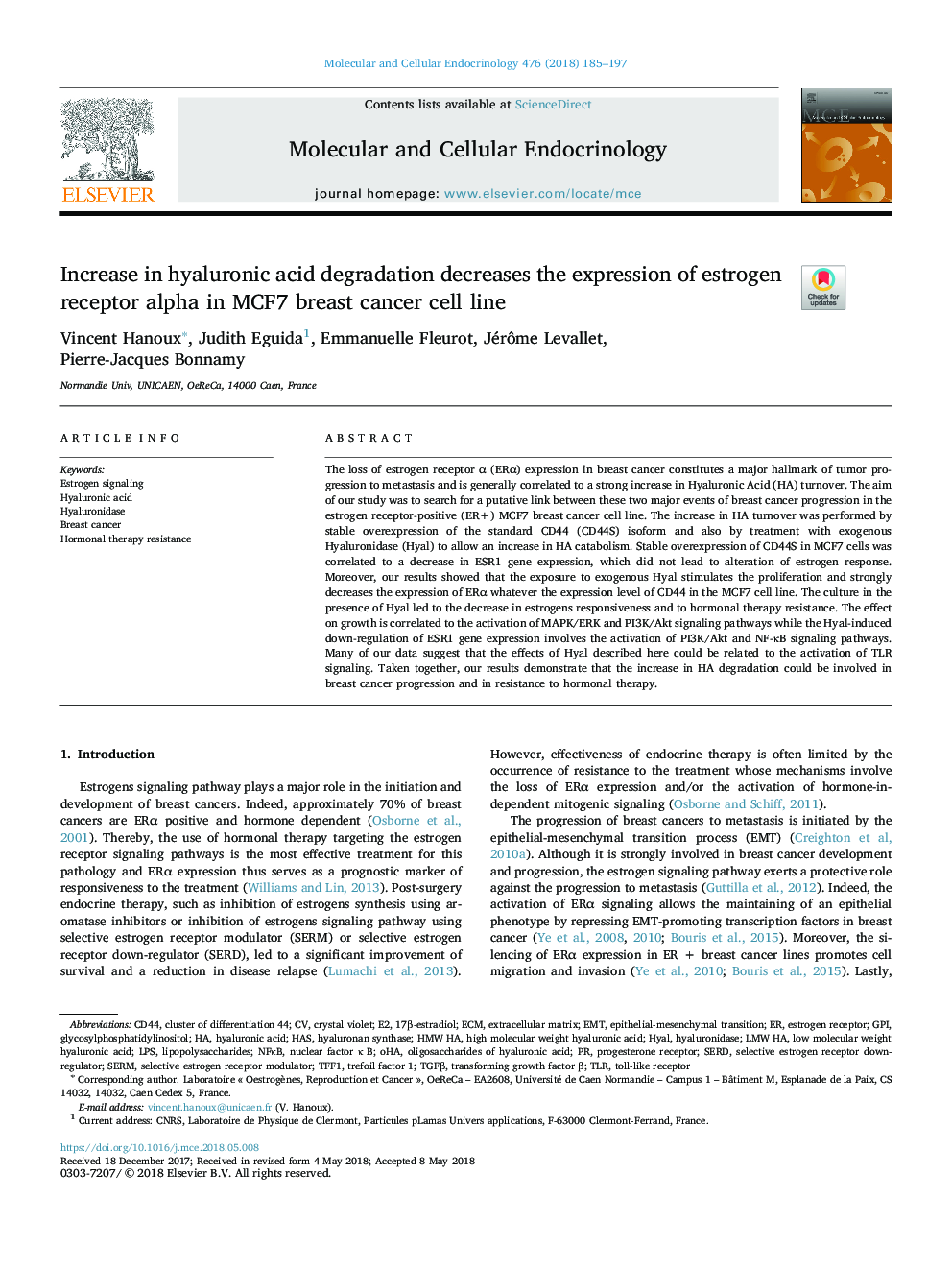| Article ID | Journal | Published Year | Pages | File Type |
|---|---|---|---|---|
| 8956338 | Molecular and Cellular Endocrinology | 2018 | 13 Pages |
Abstract
The loss of estrogen receptor α (ERα) expression in breast cancer constitutes a major hallmark of tumor progression to metastasis and is generally correlated to a strong increase in Hyaluronic Acid (HA) turnover. The aim of our study was to search for a putative link between these two major events of breast cancer progression in the estrogen receptor-positive (ER+) MCF7 breast cancer cell line. The increase in HA turnover was performed by stable overexpression of the standard CD44 (CD44S) isoform and also by treatment with exogenous Hyaluronidase (Hyal) to allow an increase in HA catabolism. Stable overexpression of CD44S in MCF7 cells was correlated to a decrease in ESR1 gene expression, which did not lead to alteration of estrogen response. Moreover, our results showed that the exposure to exogenous Hyal stimulates the proliferation and strongly decreases the expression of ERα whatever the expression level of CD44 in the MCF7 cell line. The culture in the presence of Hyal led to the decrease in estrogens responsiveness and to hormonal therapy resistance. The effect on growth is correlated to the activation of MAPK/ERK and PI3K/Akt signaling pathways while the Hyal-induced down-regulation of ESR1 gene expression involves the activation of PI3K/Akt and NF-κB signaling pathways. Many of our data suggest that the effects of Hyal described here could be related to the activation of TLR signaling. Taken together, our results demonstrate that the increase in HA degradation could be involved in breast cancer progression and in resistance to hormonal therapy.
Keywords
ECMTrefoil factor 1HASSERMGPiTLRSERDCD44TGFβLPSTFF117β-estradiolNFκBHyaluronic acidOHACrystal violetTransforming growth factor βEMTToll-like receptorcluster of differentiation 44Selective estrogen receptor down-regulatorBreast cancerEstrogen signalingNuclear factor κ BLipopolysaccharidesExtracellular matrixSelective estrogen receptor modulatorHyalHyaluronan synthaseHyaluronidaseEpithelial-mesenchymal transitionglycosylphosphatidylinositolEstrogen receptorProgesterone receptor
Related Topics
Life Sciences
Biochemistry, Genetics and Molecular Biology
Cell Biology
Authors
Vincent Hanoux, Judith Eguida, Emmanuelle Fleurot, Jérôme Levallet, Pierre-Jacques Bonnamy,
